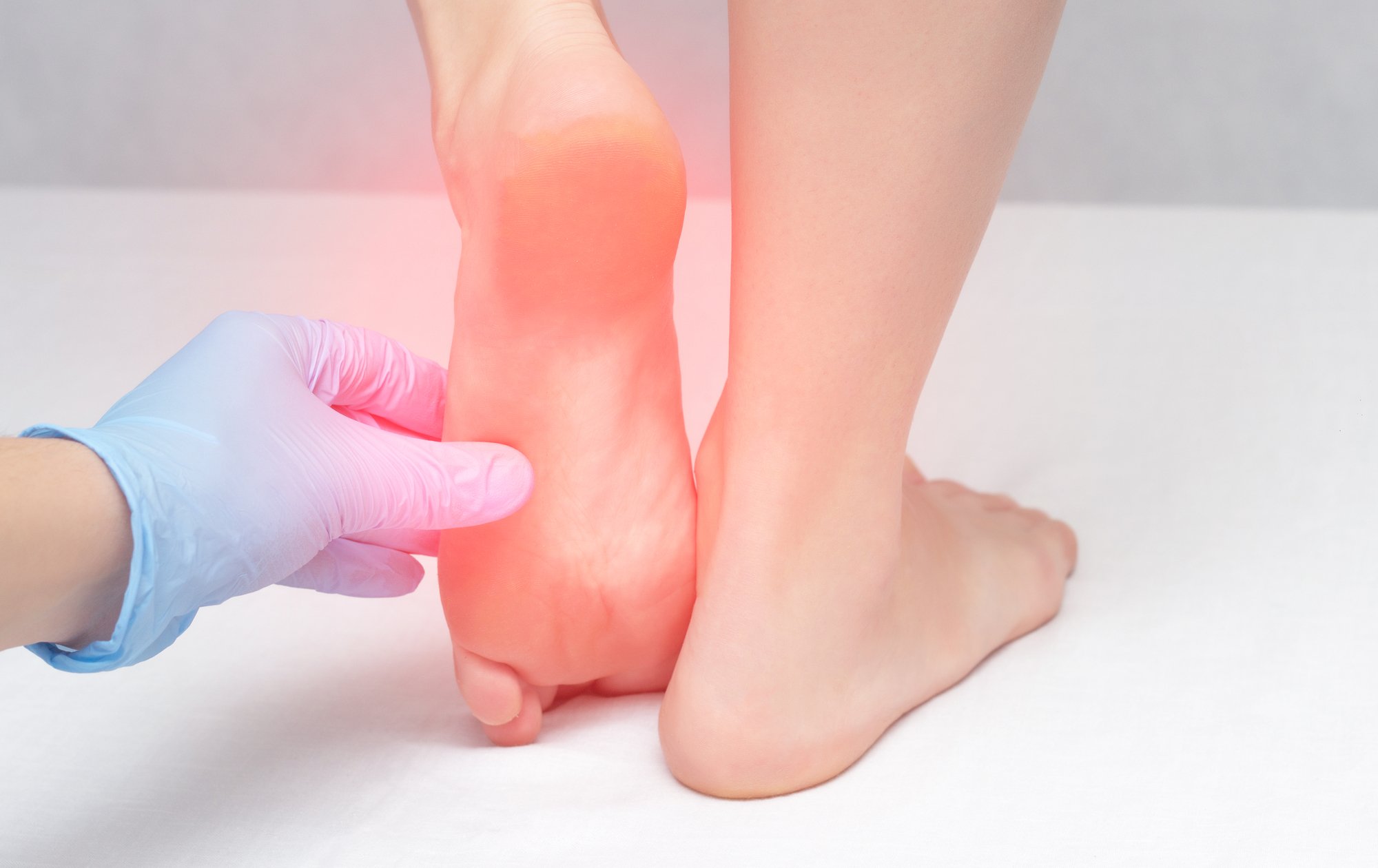Gout is a painful form of arthritis that primarily affects the joints, especially in the feet and ankles. It results from an accumulation of uric acid crystals, causing inflammation, swelling, and intense pain. Managing gout requires a comprehensive approach, and podiatrists play a crucial role in diagnosing, treating, and preventing gout-related complications. Additionally, individuals with diabetes are at a higher risk of developing gout, making podiatric care even more essential. This article explores the role of podiatrists in managing gout, its connection with diabetes, and how they help patients maintain mobility and reduce pain.
Understanding Gout and Its Impact on Foot Health
Gout is caused by the buildup of uric acid, which forms sharp crystals in the joints. It commonly affects the big toe but can also impact other parts of the foot. Factors contributing to gout include:
- Dietary choices – High-purine foods like red meat, seafood, and alcohol increase uric acid levels.
- Genetics – A family history of gout can increase the likelihood of developing the condition.
- Obesity – Excess weight contributes to higher uric acid production.
- Kidney dysfunction – Impaired kidney function reduces uric acid excretion.
- Diabetes – People with diabetes are more susceptible to gout due to metabolic imbalances.
Symptoms of gout include sudden, severe pain, redness, swelling, and warmth in the affected joint. Without proper treatment, chronic gout can lead to joint damage and mobility issues.
The Link Between Gout and Diabetes
Diabetes and gout are closely related, as both conditions share risk factors and underlying metabolic dysfunctions. People with diabetes have a higher likelihood of developing gout due to:
- Insulin Resistance – Insulin resistance in type 2 diabetes makes it harder for the kidneys to excrete uric acid, leading to gout attacks.
- Obesity and Inflammation – Excess body weight and chronic inflammation increase the risk of both gout and diabetes.
- High Blood Sugar Levels – Elevated blood sugar can contribute to uric acid buildup, worsening gout symptoms.
- Medication Side Effects – Some diabetes medications affect kidney function, making uric acid accumulation more likely.
For individuals with both gout and diabetes, managing one condition effectively can help reduce complications related to the other.
The Role of Podiatrists in Gout and Diabetes Management
1. Diagnosis and Early Detection 
Podiatrists are often the first specialists to recognize the signs of gout and diabetes-related foot issues. They diagnose gout through:
- Physical examination – Checking for joint swelling, redness, and tenderness.
- Medical history review – Evaluating risk factors such as diabetes, obesity, and diet.
- Imaging tests – X-rays, ultrasounds, or MRIs to assess joint damage.
- Lab tests – Blood tests to measure uric acid levels and joint fluid analysis to detect crystals.
Early diagnosis allows for prompt intervention, preventing further complications.
2. Pain Management and Inflammation Reduction
Podiatrists help manage gout pain and inflammation using:
- Medications – Prescribing anti-inflammatory drugs, colchicine, or corticosteroids.
- Cold therapy – Applying ice packs to reduce swelling and numb pain.
- Custom orthotics – Providing supportive footwear to alleviate joint pressure.
- Foot elevation – Recommending elevation to minimize swelling and discomfort.
For diabetes patients, pain management strategies must be adapted to avoid complications such as neuropathy and poor circulation.
3. Lifestyle and Dietary Guidance
Podiatrists educate patients on lifestyle changes that help prevent gout flare-ups and control diabetes, including:
- Diet modifications – Reducing purine-rich foods, increasing water intake, and monitoring carbohydrate consumption.
- Weight management – Maintaining a healthy weight to decrease uric acid and blood sugar levels.
- Exercise recommendations – Engaging in low-impact activities to support joint and metabolic health.
- Alcohol and sugar reduction – Limiting alcohol and sugary beverages to lower uric acid and glucose levels.
Lifestyle adjustments are key to long-term gout and diabetes management, preventing recurrent attacks and complications.
4. Preventing Foot Deformities and Joint Damage
Chronic gout can lead to permanent joint damage, tophi (hard uric acid deposits), and foot deformities. Diabetes further complicates foot health due to the risk of neuropathy and ulcers. Podiatrists assist in:
- Monitoring joint health – Regular check-ups to track progression and intervene early.
- Recommending supportive footwear – Custom shoes and orthotics to protect affected joints and prevent pressure ulcers.
- Suggesting physical therapy – Exercises to improve joint function and reduce stiffness.
- Performing minor procedures – In severe cases, removing tophi, draining fluid, or correcting deformities.
Early intervention prevents complications that could affect mobility and daily activities.
5. Coordination with Other Healthcare Providers
Gout and diabetes management require a multidisciplinary approach. Podiatrists collaborate with:
- Endocrinologists – For blood sugar control and diabetes management.
- Rheumatologists – For advanced gout treatment and medication management.
- Primary care physicians – To monitor overall health and risk factors.
- Nutritionists – To develop diet plans tailored to gout and diabetes prevention.
This coordinated approach ensures comprehensive care for patients with both conditions.
Health Benefits of Seeing a Podiatrist 
✅ Early detection – Identifying symptoms before complications arise.
✅ Specialized foot care – Expertise in managing foot and ankle-related gout and diabetes issues.
✅ Personalized treatment plans – Custom strategies to manage pain, prevent flare-ups, and improve blood circulation.
✅ Preventive care – Guidance on lifestyle changes to reduce gout and diabetes-related foot complications.
✅ Collaboration with specialists – Ensuring a well-rounded approach to foot health management.
✅ Reduced risk of joint damage and infections – Timely treatment prevents long-term deformities, neuropathy, and foot ulcers.
✅ Better quality of life – Managing pain and preventing flare-ups allows for improved daily functioning and mobility.
How to Prevent Gout Attacks and Diabetes-Related Foot Problems
To minimize the risk of gout attacks and diabetes-related foot complications, consider the following tips:
- Stay hydrated – Drinking plenty of water helps flush out excess uric acid and stabilize blood sugar.
- Follow a balanced diet – Avoid high-purine foods and monitor carbohydrate intake.
- Maintain a healthy weight – Losing excess weight reduces gout and diabetes risks.
- Limit alcohol and sugary drinks – These contribute to higher uric acid and blood glucose levels.
- Exercise regularly – Engage in activities that promote joint flexibility and improve circulation.
- Monitor uric acid and blood sugar levels – Regular check-ups help detect issues early.
Final Thoughts
Podiatrists play a vital role in managing gout and diabetes-related foot issues by diagnosing the condition, providing pain relief, offering lifestyle guidance, and preventing long-term joint damage. Contact us for Seeking professional care early ensures better management and prevents complications that could affect mobility and quality of life.
Contact GSFA Group for Expert Podiatry Care
📍 Address: 664 Commons Way, Building D, Toms River, NJ 087551 Clara Maas Drive, Belleville, NJ 07109
📧 Email: gsfagroup@gmail.com
📞 Phone: 732-557-9900 (Toms River) | 973-450-3035 (Belleville)
Related Posts:
How to Choose the Best Toms River Podiatrist

0 Comments